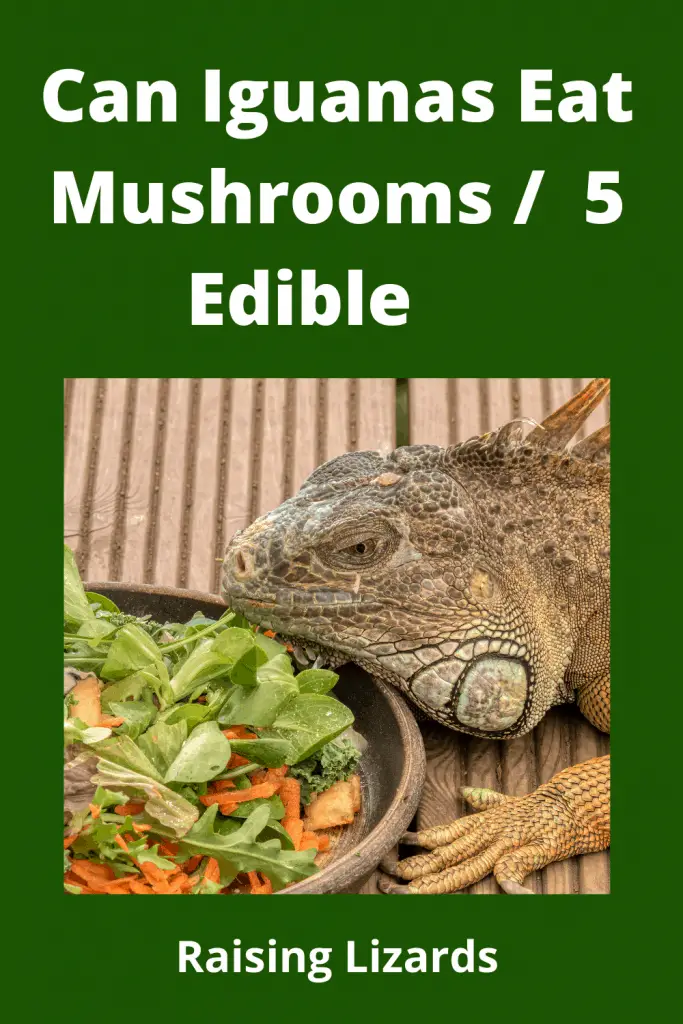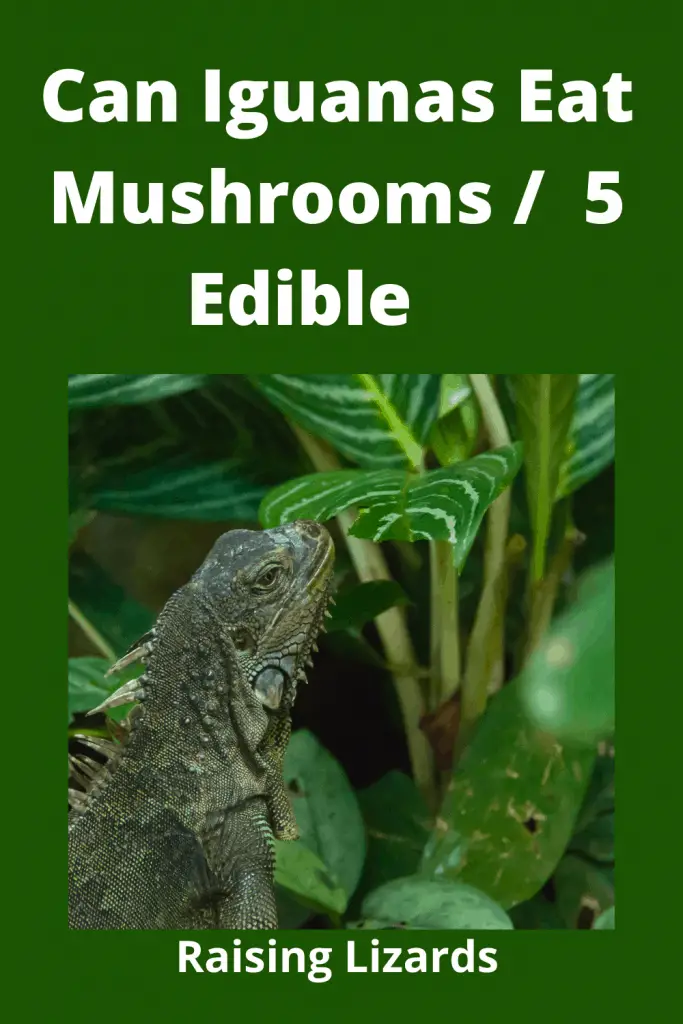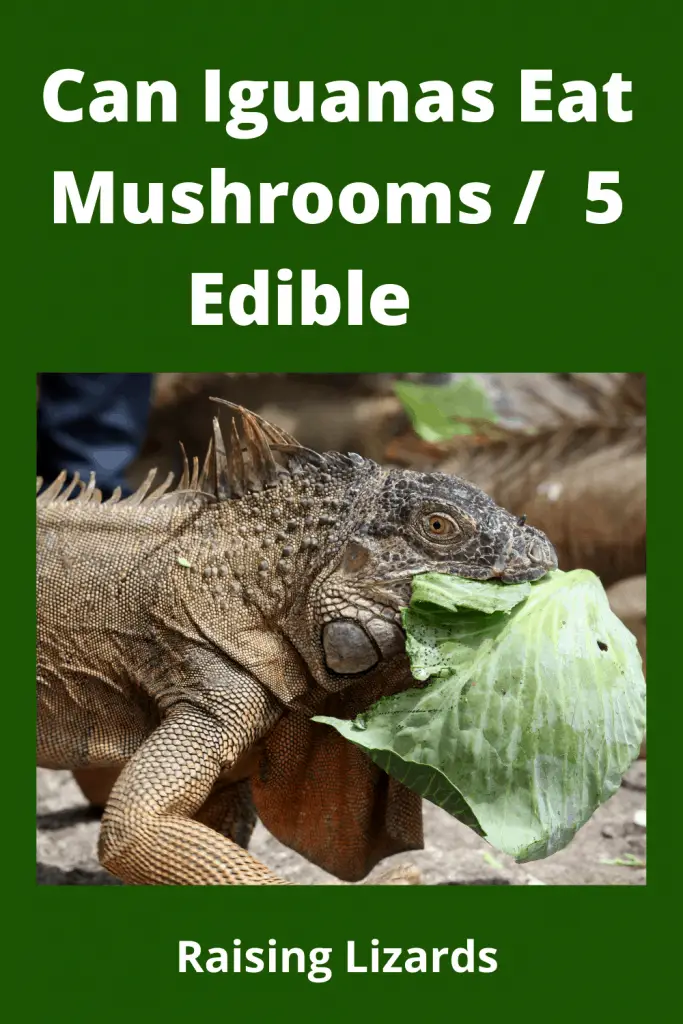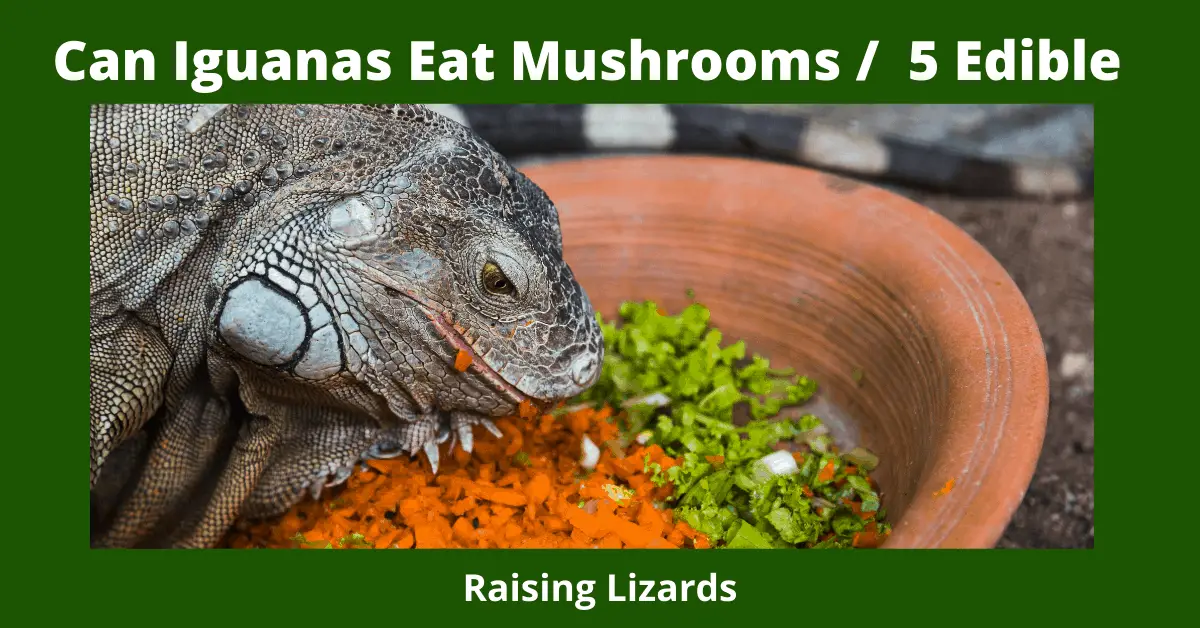In the new American world, green iguanas are large semi-arboreal to arboreal lizards. Basically, adult iguanas are strictly herbivorous. It was believed that the babies at juvenile stages were insectivores and then grew up into herbivorous adults. To investigate, research was carried out and the stomach content of wild iguanas was analyzed thoroughly which revealed that this was not the case.
Iguanas were born herbivorous and do not shift from insectivorous to herbivorous diet at any stage of life. Their GIT tract is designed to support a plant-based diet and has evolved to elaborate on the hindgut that houses the microbial fermentation system to use the fibers as effectively as possible. The adult lizards mostly spend their time in the upper parts of the trees while the juveniles keep roaming in the lower parts of the trees and bushes or on the ground. Iguanas are wild, so basically their diet consists of a variety of leaves, fruits, and flowers so while planning the diet for iguanas, consider a nutritiously balanced and healthy diet. Jump to 7 Reasons to Have a Pet Iguana

Major Part of Iguana’s Diet:
About 80-90% of the Iguana’s diet is green vegetables. Yellow, red, and orange vegetables can also be included.
One should always consider the nutrient count of each vegetable being fed to the iguana, including the iceberg, head lettuce, and celery, and should avoid the fiber-rich foods. The light-colored parts of vegetables are less nutritious as compared to the dark green parts.
The vegetables that present the high percentage of the diet include alfalfa hay, Bok Choy, kale, parsley, clover, savory, dandelions, green cabbage, green beans, cilantro, and escarole.
Lesser Percentage of Diet:
The lesser percentage of the diet includes cactus, squash, sprouts, sweet potatoes, okra, cucumber parsnips, carrots, mushrooms, asparagus, peas, and corn.
The fruits include apples, peaches, tomato, guava, kiwi, and melons. Healthy fruits include high calcium-containing figs, apricots, dates, strawberries, and raspberries.
Because fruits are with lower mineral content, they can be added as a dressing, but not the sole source of diet.
The Typical Diet of Iguanas:
As mentioned earlier, iguanas are primarily herbivorous and depend upon leaves such as turnip greens, dandelion, flowers, mustard, fruits, and growing shoots of almost 100 different plant species. Wild plum is one of the favorite foods of green iguanas in Panama. Iguanas require a precise ratio of minerals 2:1 of calcium and phosphorous.
It’s important to have a variety of foods to feed the iguanas and it should be a mixture of leafy vegetables, including turnips, broccoli, and all greenish parts of plants, fruits like collards, butternut squash, acorn, and mangoes. In order to acquire the essential microflora, the juveniles often eat the waste material of adults to digest their low quality and hard to process a vegetarian diet.
Wild adult green iguanas have been observed eating bird eggs. Some zoologists believe that such a protein-rich diet is unhealthy for the digestive tract of iguanas and may have severe long-term health issues including kidney problems which could be fatal. There are few reports that iguanas have been known to feed on romaine lettuce with calcium and vitamins,
but it is recommended to avoid feeding iguanas with lettuce or meat, and instead to receive vitamins and minerals via an herbivorous diet.
Mushrooms as a Part of Diet:
Mushrooms are the fruiting bodies of a fungus and typically produced above the ground. The word mushroom is often applied to the fungi that have a stipe, a cap, and gills.

The question usually asked is, can iguanas feed on mushrooms. The answer is yes, but mushrooms cannot be served as the sole source of nutrients, but only as an additive to the iguana salad.
Mushrooms are a rich source of phosphorous and should only be fed on occasions. While feeding the iguanas on mushrooms, make sure to chop the mushroom as finely as possible. Always have a nutrient count of the mushroom species to be fed to your pet iguana. Some mushrooms are highly poisonous and are called toadstools, so make sure to identify the edible species correctly.
Nutritional Content of Raw Mushrooms:
The raw brown mushrooms contain about 92% water, 4% carbohydrates, 2% protein, and less than 1% fats. In a 100-gram amount, the raw mushrooms provide22 calories and are rich in B vitamins e.g., riboflavin, niacin, pantothenic acid, selenium, and copper, and have 10-19% phosphorous, zinc and potassium.
Vitamin C and sodium content are usually minimal or are absent. The percentage of vitamin D depends upon postharvest handling and exposure to the sunlight. UV-exposed mushrooms have substantial amounts of vitamin D.
Edible Mushroom Species:
One should have knowledge about the edible species because many species are toxic and highly poisonous and can cause the immediate death of the consumer.
Mushrooms are commonly used in cooking and are sold in supermarkets that have been commercially grown in mushroom farms. The common edible species of mushrooms are:
Agaricus Bisporus:
It is the most popular edible mushroom and is considered safe for most living beings to eat. It is native to the grasslands of Europe and North America. It has two color states while immature- white and brown and both these states have various names, additional names are also for the mature states.
When it’s white, it is usually called a white mushroom, button mushroom, or table mushroom while the immature brown stage is called Swiss brown or Italian brown mushroom. The mature stage is sold under the name Portobello mushroom, chestnut mushroom, and baby Bella.
Hericium Erinaceus:
It is another edible mushroom that belongs to the toothed fungus group and is native to North America, Europe, and Asia. It appears on the hardwoods and has tended to grow in clumps of dangling spines. In wild these are common during late summer and fall on hardwoods particularly, American beech.
Shiitake:
Lentinuoia Edodes commonly known as shiitake are another edible mushroom species that can be fed to the iguana. It is considered medicinal in some traditional mushrooms. It grows in groups on the decaying wood of deciduous trees, particularly chestnut, maple, beech, poplar, Chinquapin, and mulberry.
Pleurotus:
Pleurotus is one of the most widely eaten mushrooms and is called oyster or tree mushrooms. These are some of the most cultivated edible mushrooms in the world and have been used in the mycoremediation of pollutants such as petroleum and polyaromatic hydrocarbons. These also have lovastatin, a form that lowers the cholesterol level of the body.
Enokitake:
Enoki, also known as velvet shank mushroom, is one of the species of edible mushroom. It is well-known in Japanese cuisine where it is also known as enokitake. Cultivated species due to less exposure to sunlight are white in color while the wild display dark brown coloration.
China is the major producer of edible mushroom species, separating the edible species from the poisonous species requires meticulous attention to detail. There is not even a single trait by which the poisonous mushrooms can be identified, nor the one by which edibles can be identified.
The Toxic Mushroom Species:
Many mushroom species produce secondary metabolites that are toxic, mind-alerting, antibiotic, and antiviral. There are a small number of deadly species, while others cause severe unpleasant symptoms. It is a kind of defense mechanism used by mushrooms against consumption and premature destruction.
The chemicals that render the mushrooms to be inedible are either causing the consumer to vomit or to avoid the consumption altogether. Mostly the brightly colored mushroom species or the species whose gills are visible are often highly poisonous, but this can’t be applied as a rule to identify the poisonous mushrooms.

Iguana Food Pyramid:
You can design a food guide for your iguana to feed him. These food guides are the food pyramids and are based on macronutrients and calcium requirements of wild iguanas. You don’t need to follow the diet plan strictly; these pyramids are based on the experience of different iguana breeders and are found to work with their animals.
This pyramid is a user-friendly guide, the foods mentioned on the base of the pyramid are the most important, however, all food groups mentioned above the baseline to the peak are also important from the perspective of iguana’s health.
Iguana Diet
| Greens / 35% | Fruits / 15% | Fiber / 20% | Avoid | Supplements |
|---|---|---|---|---|
| leaves | Apples | Grain Bread | Meat | Calcium |
| Flowers | Peaches | Bran Cerial | Insects | phosphorus |
| lettuce | Guava | Bugs | D3 / Light / Supplement | |
| Alpha Hay | Kiwi | Rodents | Multivitamins | |
| Bok Choy | Melons | Dog Food | ||
| Clover | Figs | Cat Chow | ||
| Savory | Apricots | SoyBeans | ||
| Dandelions | Dates | Pesticides | ||
| Green Cabbage | Strawberries | Spinache | ||
| Green Beans | Raspberries | Rhubarb | ||
| Sprouts | Mangoes | Celry | ||
| Okra | Beetroot | |||
| Cucunbers | Chard | |||
| Carrots | Fried Chips | |||
| Asparagus | Leeks | |||
| Peas | Poisonous Mushrooms | |||
| Corn | ||||
| Collard | ||||
| Squash | ||||
| Edible Mushrooms |
Greens
Fruits
Avoid
Supplements
Lizard Habitats and Facts
| Lizard Type | Foods | Adult Size | Vivarium Type | Eggs | Temperament | Country Origin | Price |
|---|---|---|---|---|---|---|---|
| Ameiva | Insects | 20 " | Tropical Woodland | 2-8 | Aggressive | Central, South America | $ 49.99 |
| Alligator Lizard | Insects | 20" | Semi- Aquatic | 6-12 | Aggressive | North America | $ 18 |
| Asian Water Dragons | Carnivorous | 40" | Tropical Woodlands | 8-16 | Aggressive | Asia | $ 18 - $ 80 |
| Panther Chameleon | Insects | 12" | Tropical Woodlands | 30-50 | Aggressive | Madagascar | $ 150 - $ 600 |
| Jacksons Chameleon | Insects | 14" | Temperate Woodlands | Up to 30 Live Young | Aggressive | East Africa | $ 75 - $175 |
| Giant Day Gecko | Insects | 10" | Tropical Woodlands | 2 | Aggressive | Madagascar | $ 79.99 |
| Leopard Gecko | Insects | 10" | Desert | 2 | Aggressive | Asia, India | $ 30 - $ 45 |
| Tokay Gecko | Insects | 14" | Tropical Woodland | 2 | Aggressive | Southeast Asia, New Guinea | $ 39.99 |
| Blu Tongue Skink | Vegetarian | 20" | Savannah | 6-25 | Aggressive | New Guinea, Australia | $ 150 - $ 649 |
| Common Walled Lizard | Insects | 8" | Savannah | 3-8 | Aggressive | Central Europe | $ 460 - $ 600 |
| Green Lizard | Insects | 16" | Savannah | 6-20 | Aggressive | Europe, Southern Asia | ? |
| Green Iguana | Vegetarian | 60" | Tropical Woodland | 20-40 | Aggressive | Central, South America | $ 39 - $ 55 |
| Desert Iguana | Vegetarian | 15" | Desert | 3-10 | Aggressive | USA, Mexico | $ 34.99 |
| Six Lined Racerunner | Insects | 11" | Savannah | 4-6 | Aggressive | USA | $ 29.99 |
| Chinese Crocodile Lizard | Carnivorous | 12" | Semi- Aquatic | 2-12 Live Young | Aggressive | China | $ 1200 |
| Collared Lizard | Insects | 14" | Desert | 4-24 Eggs | Aggressive | USA, Mexico | $ 53.99 |
| Western Fence Lizard | Insects | 9" | Savannah | 6-13 | Aggressive | USA | $ 19.99 |
| Chuckwalla | Vegetarian | 18" | Desert | 6-13 eggs | Aggressive | Mexico | $ 88.99 |
| Green Anole | Insects | 9" | Tropical Woodland | 2 | Aggressive | Southern USA | $ 10.00 |
| Brown Anole | Insects | 8" | Tropical Woodland | 2 Eggs | Aggressive | Caribbean, Central America | $ 3.99 - $ 7.99 |
| Knight Anole | Insects | 22" | Tropical Woodland | 1-2 | Aggressive | Cuba | $ 39.99 |
| Nile Monitor | Carnivorous | 79" | Savannah | 10-60 | Aggressive | Egypt | $ 69.99 |
| Bosc's Monitor | Carnivorous | 69" | Savannah | 10-50 | Aggressive | Central Africa | $ 100 - $ 150 |
| Bearded Dragon | Insects | 20" | Desert | 15-30 | Social | Australia | $ 60 - $ 400 |
| Agama | Insects | 16" | Savannah | 10-20 | Aggressive | North Africa | $ 24.99 |
| Five Lined Skink | Insects | 9" | Temperate Woodland | 15 | Aggressive | Africa | $ 10 |
| Red Tailed Rock Lizard | Insects | 8" | Savannah | 2-4 | Aggressive | South Africa | ? |
Food
Size
Vivarium Type
Country Origin
Price
Eggs
Temperament
Approx Cost


